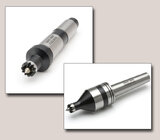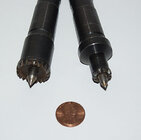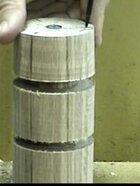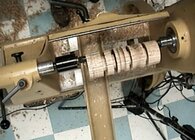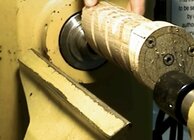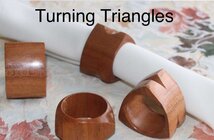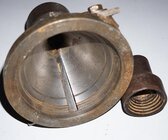While teaching a recent spindle turning class, the students were using a wooden mallet to "seat" their 4 prong spur drives into the end of 8" long 2x2 SPF (spruce-pine-fir) spindle blanks, soft wood. Of course they positioned their blanks on the worktable directly over a 4x4 leg resting on concrete. I first demonstrated, and no matter how hard I whacked the end of the 4 prong spur drive the spurs only entered the end of the blank about 1/32". Having encountered this repeatedly over the years I've looked at a number of spurs. The bevel angle, although not acessible for a measurement, always looks to be about 45 degrees or greater. Anyone else feel the bevel angle on four prong spur drives is too large?
Anyone try to grind a more acute angle on the spurs? If so, what was your experience please.
Anyone try to grind a more acute angle on the spurs? If so, what was your experience please.

